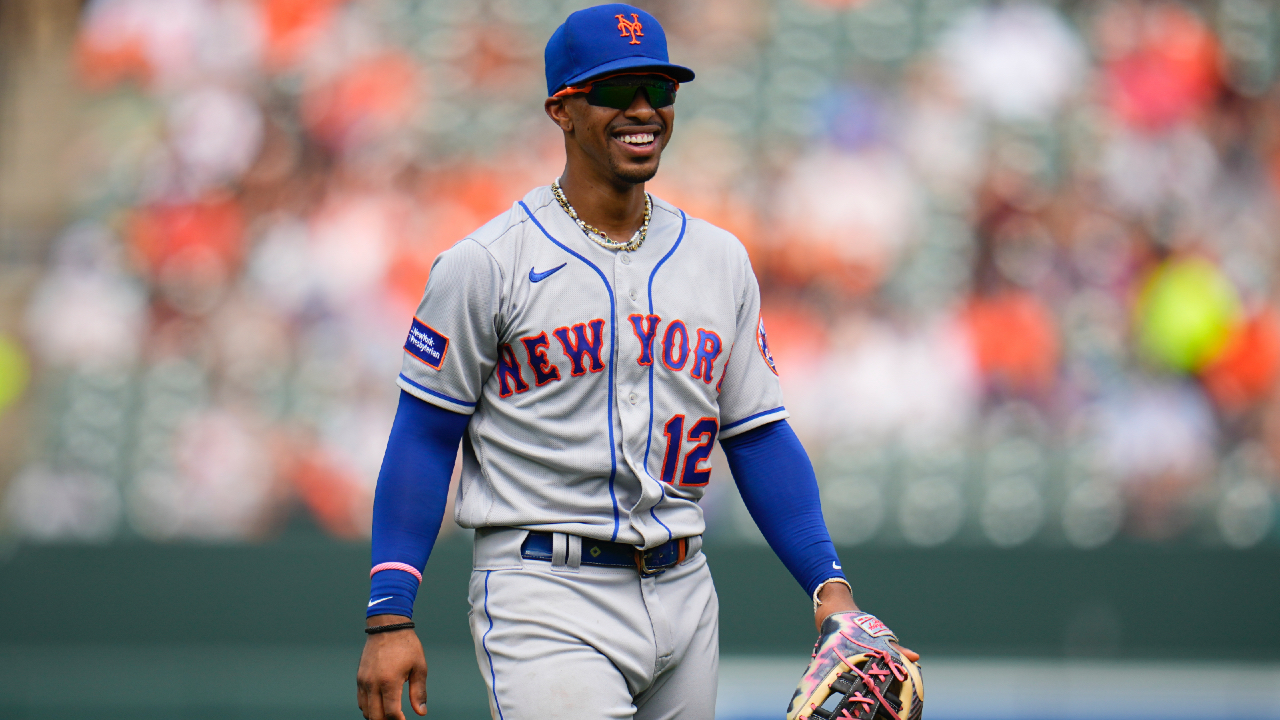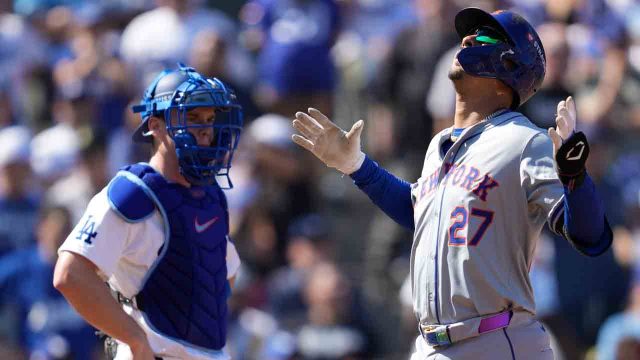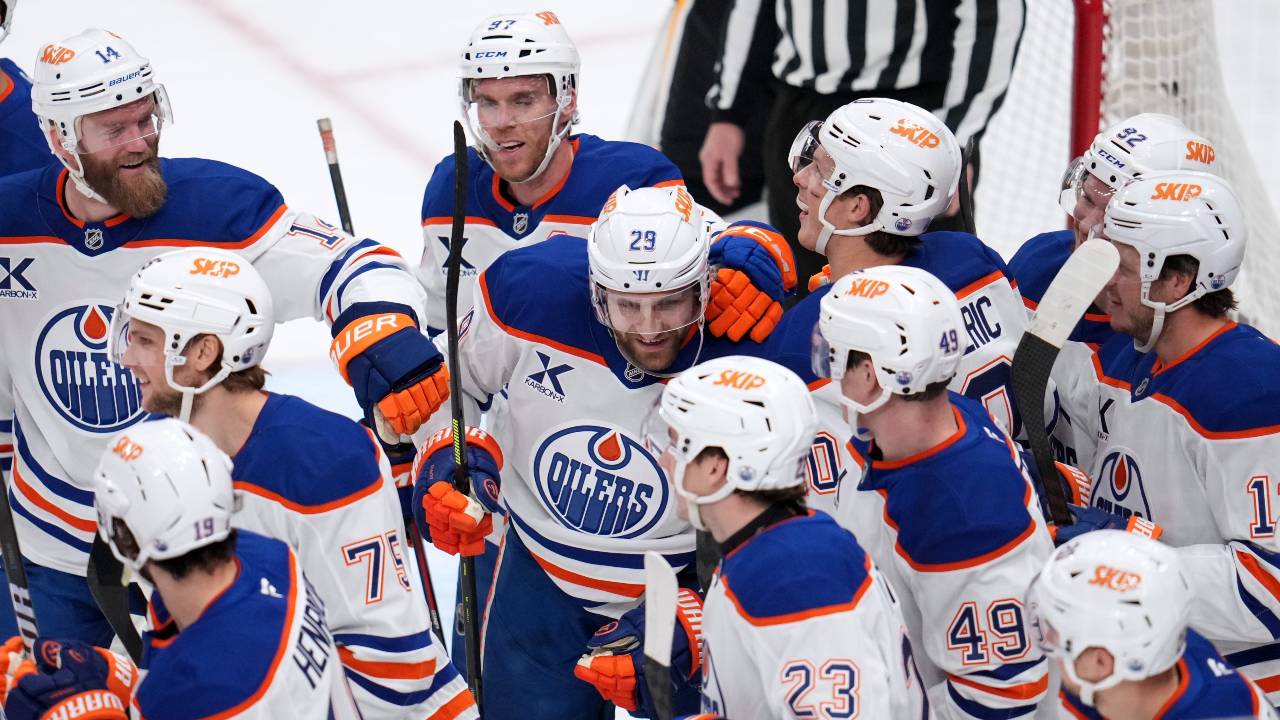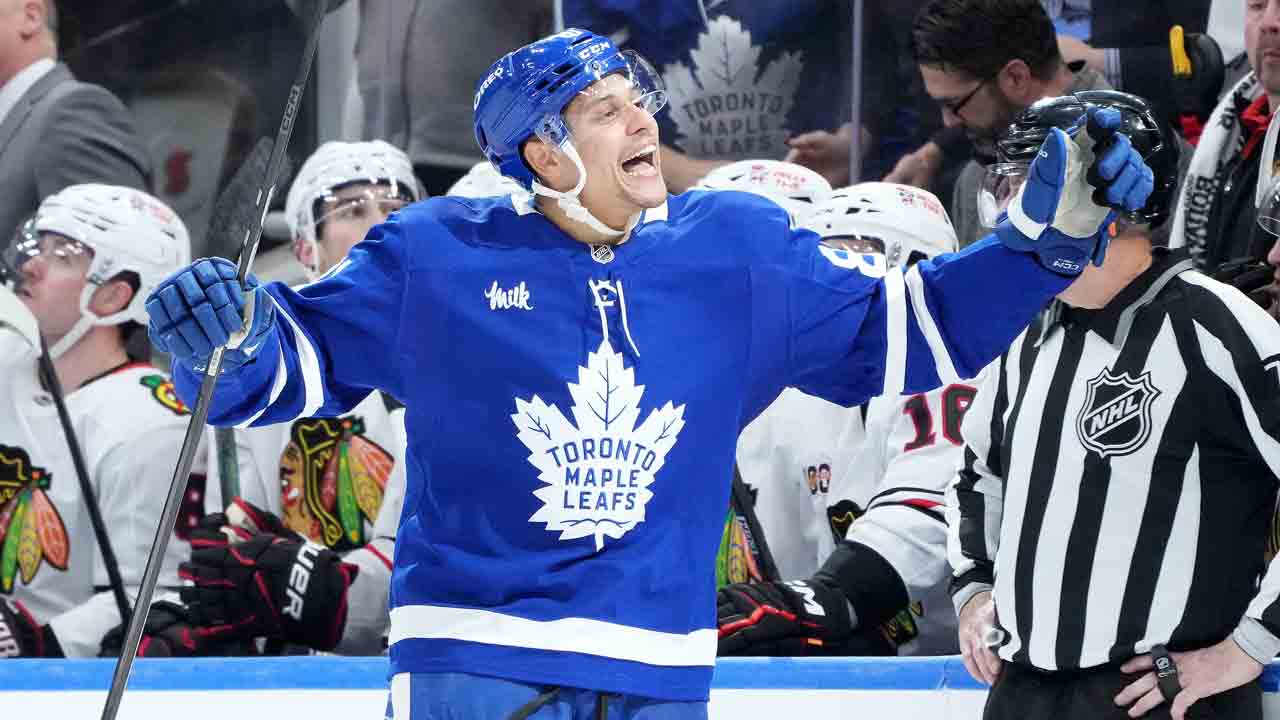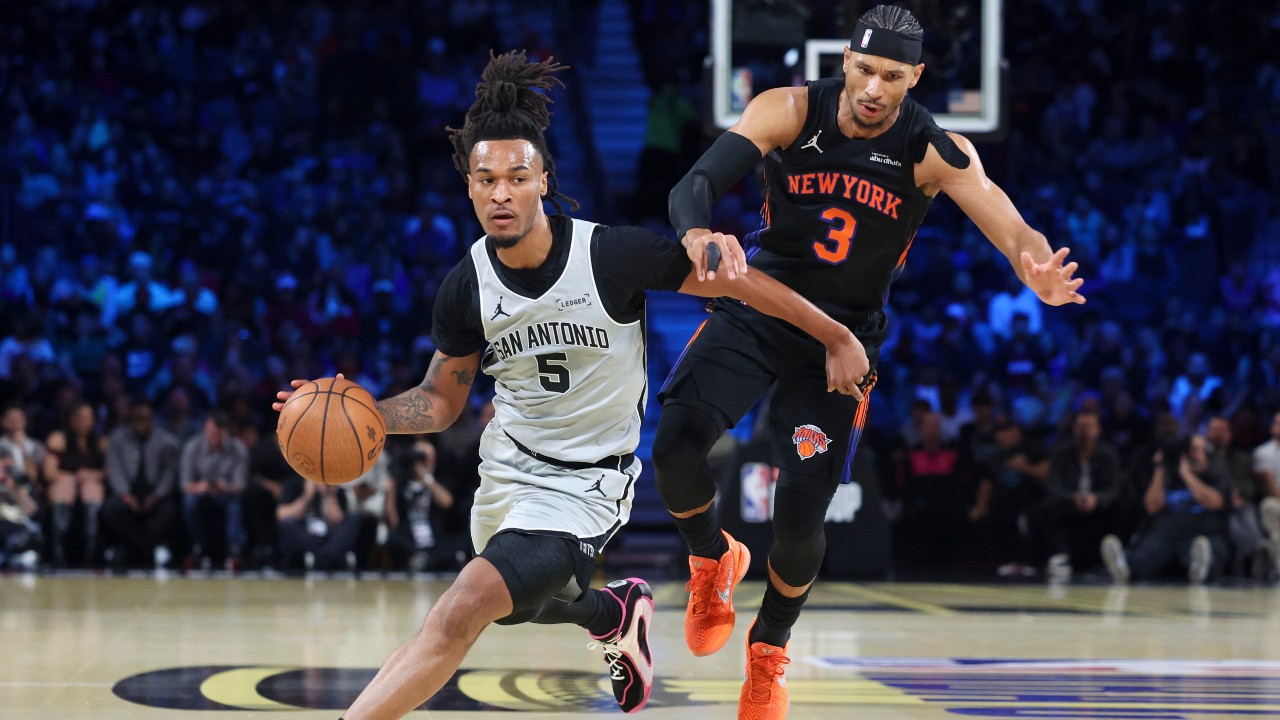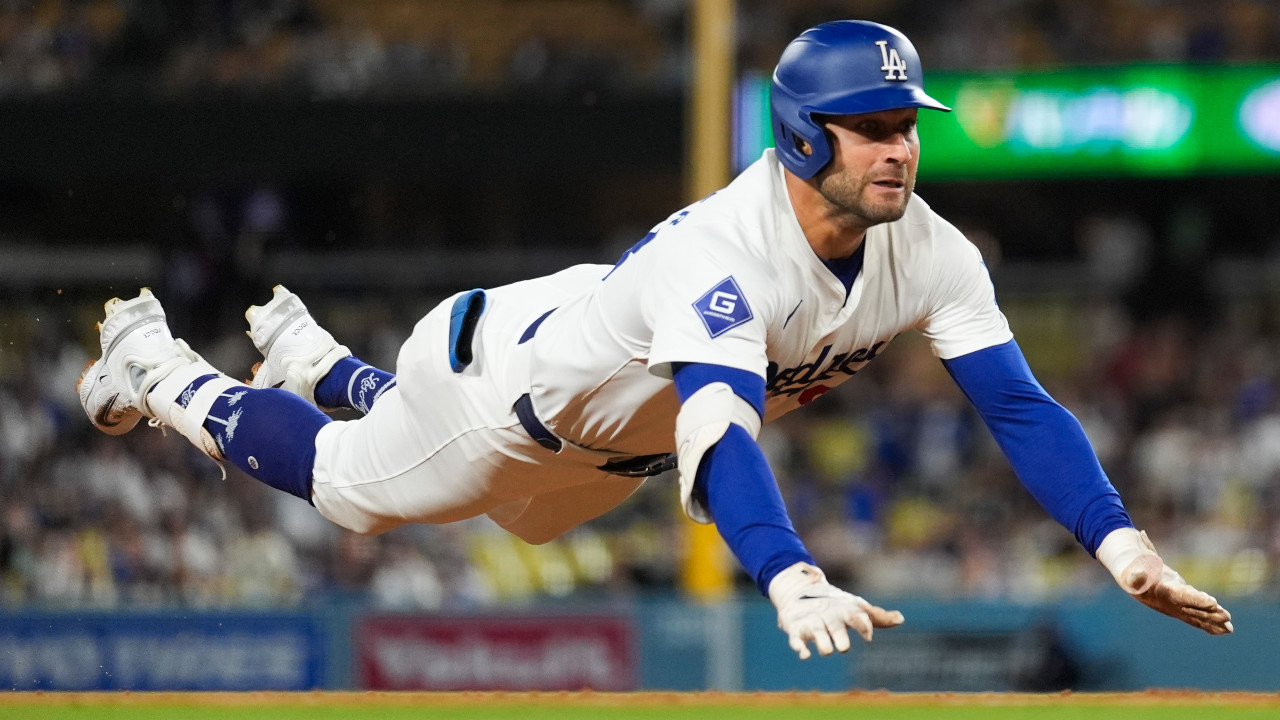
LOS ANGELES — Kevin Kiermaier felt like each day might be his last with the Toronto Blue Jays — and as a big-league player — as the trade deadline approached back in July. The club had signalled its intentions with the outfielder when it placed him on waivers earlier in the month and it didn’t bode well for him when he went unclaimed.
“It’s wild,” the 34-year-old outfielder said 2½ months later, having been traded to the Los Angeles Dodgers and landing on their National League Championship Series roster. “Going back to the deadline, if I didn’t get traded I felt like I was just going to be released and done. I kind of sensed that from the team and I know they wanted to move me to try and get rid of that last part of that salary, and rightfully so.
“But when I got called into (John) Schneider’s office (July 30), he was on speakerphone with Ross (Atkins) and immediately he was like, ‘OK, you got traded to the Dodgers,’” Kiermaier continued. “My body was feeling awful at that time so when I heard Dodgers I was thrilled because I know they’re all about winning. That was only thing that was worth it for me to keep going with the way my body felt. It pumped life into me immediately and playing on grass from the get-go was a major game-changer. I said, ‘Whatever I’m asked to do, I’m going to do it.’ And here I am now.”
Kiermaier played in 34 games after the trade, which sent pending free-agent lefty Ryan Yarbrough to the Blue Jays, and saw his first action of the post-season in Sunday’s 9-0, Game 1 win over the New York Mets, coming in for three innings of defence.
Each moment he spends on the field right now is a bonus after he’d reconciled himself to the end of his playing days. Kiermaier had said in July that he planned to retire at season’s end, regardless of what happened, so the trade to the Dodgers was revitalizing.
“I wanted to keep playing for the right reasons and for me that was going to a contender,” he said. “At the same time, if my last games were (with the Blue Jays) there in Baltimore, I was at peace in a way just because I’ve given it my all and then some. I thought I was going to have a career year this year, I really did. I worked my butt off and really thought I figured some things out and it didn’t work out like that. It got to the point where those last couple of days before the deadline, I didn’t know what to think. I was like, man, am I playing my last game? Is there a contender out there wanting me? Are we going to make anything happen? So thrilled to be here and these guys treated me amazing from the get-go.”
A couple of familiar faces helped in that regard as he reconnected with Andrew Friedman, the Dodgers’ president of baseball operations who was the Tampa Bay Rays’ general manager when Kiermaier was drafted in 2010, and GM Brandon Gomes, a former teammate.
“I asked them how everything formulated,” said Kiermaier. “They said they were talking with the Jays and the (Jays) had interest in Yarbrough. Once he got DFA’d here, they were like, ‘OK, this is where we get it done.’ Brandon Gomes told me about it and I roomed with him in spring training way back in 2015. Now he’s a GM and I’m still playing, so crazy how everything worked out.”
FREEMAN’S RUN: One of the most iconic moments of Dodgers lore is that of Kirk Gibson limping around the bases after hitting a walk-off homer against Dennis Eckersley in Game 1 of the 1988 World Series. It’s also an enduring symbol of post-season perseverance through pain, something very much on display again in Game 1 of the NLCS, when Freddie Freeman hobbled home from second on his badly sprained right ankle and leapt into Mookie Betts’ arms after crossing the plate.
Freeman’s status has been a daily question for the Dodgers all playoffs long and he was in obvious discomfort as he hustled home on Max Muncy’s single. But he logged eight innings in that 9-0 win and some 17 hours later was back on the field to play all nine innings of a 7-3 Game 2 loss to the New York Mets, perhaps worse for the wear yet undeterred.
“His gait looked good,” Dodgers manager Dave Roberts said of what he was thinking during Freeman’s fateful run. “Yes, the face didn’t look great, probably. But his gait looked good. When you’re in control, that’s something that I think you can manage. When you have to stop or start real quick, that’s what scares me.
“Thank goodness Mookie was there to save him,” Roberts continued. “But I thought the gait was fine. So I wasn’t really worried about that moment. What you’re worried about is after the fact, the stress, how he comes out of it.”
Freeman keeps finding a way to remain in the lineup, boosting his team through both his abilities and his determination.
“It’s everything,” said Roberts. “I think we all believe that if you sacrifice something, then it means more. He’s sacrificing his body right now. He’s doing a lot that people don’t know about to stay on the field. And so when he’s doing that, it means more to him, when people see him doing that, it means more to them. There’s a big sacrifice going on. And not much more you can sacrifice than your body.”
LINDOR LEADS: The impact of Francisco Lindor’s leadoff homer in Game 2 extended well beyond the 1-0 lead it provided. In fouling off four straight pitches before sending Ryan Brasier’s eighth offering over the right-field wall, he also showed the Dodgers how locked in he was right out the gate. That surely influenced their decision to intentionally walk him in the second, a call that led to Mark Vientos’ game-breaking grand slam.
That’s why Mets manager Carlos Mendoza felt that beyond the obvious, what really mattered was the way his star shortstop “attacked him, fouled off a couple of pitches, laid off a couple of breaking balls and got a pitch and drove it to set the tone. I thought overall we had really good at-bats up and down and obviously Vientos with a big one. … But a bullpen day where you don’t know what you’re going to be facing, for us to get the first one across the board was important.”
While Vientos said he took the intentional walk personally, he also made clear how “it’s just praise for Francisco. You’ve got Francisco ahead of me, and he hit a home run earlier in the game, so they would rather take a chance on me than him. But I used it as motivation. I’m like, all right, you want me up, I’m going to show you, whatever.”
Like Lindor versus Brasier, Vientos battled Landon Knack, fouling off five pitches before sending the ninth offering, a middle-up fastball, over the wall in right-centre.
“My approach was to see a heater up, but I wasn’t expecting heater,” said Vientos. “I thought I was going to get a slider and I was just going to poke it in the hole or something.”
And when the fastball came?
“Yeah, I wasn’t going to miss it,” he said.


